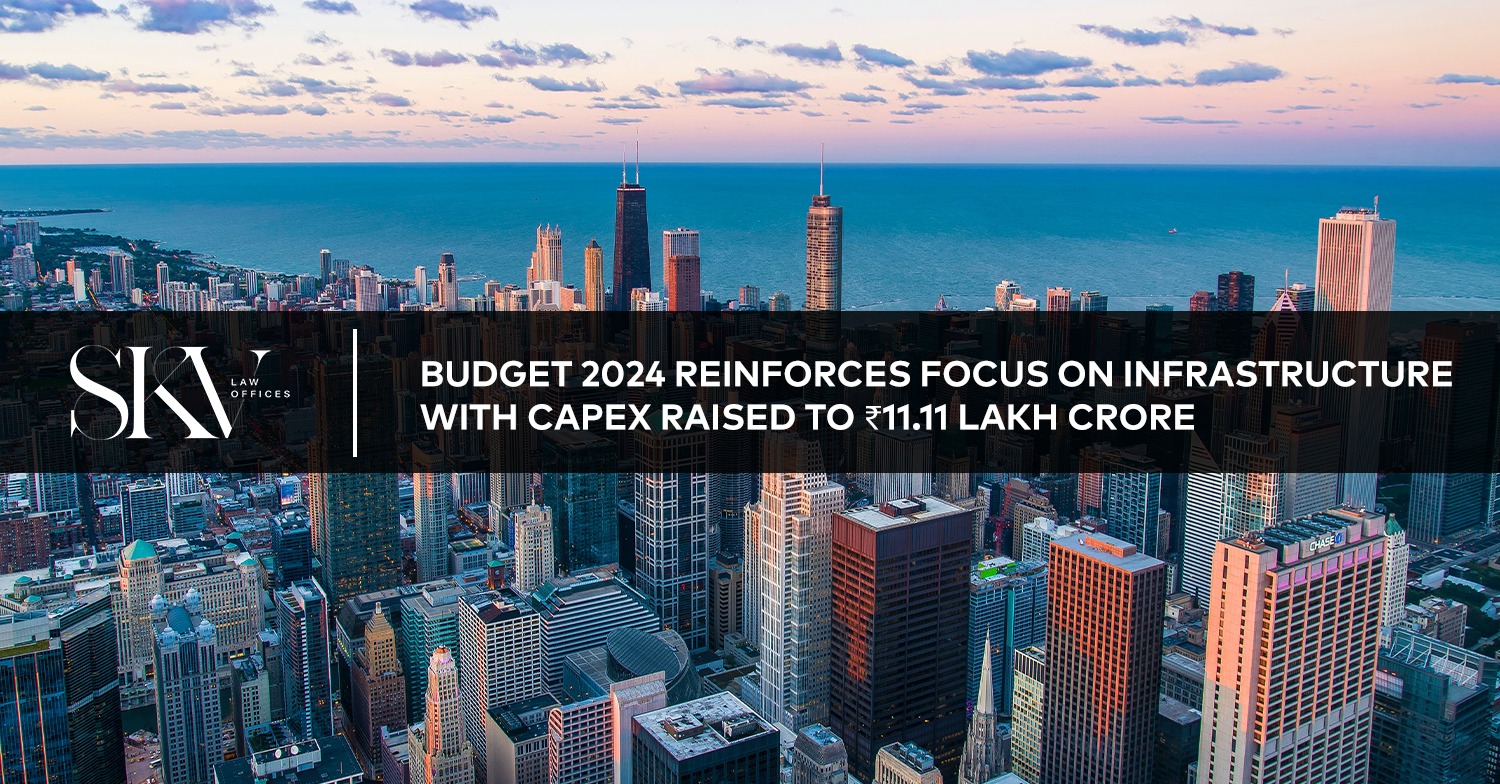Budget 2024 reinforces focus on infrastructure with capex raised to ₹11.11 lakh crore
01.02.2024
The Indian Interim Budget for 2024-2025 includes specific policies and allocations for theinfrastructure sector, which are vital for the country’s economic growth and development. Here are the key points related to these sectors:
Infrastructure Sector
- Increased Spending: The allocation for infrastructure for the fiscal year 2024/25 has been raised to 11.1 trillion rupees ($134 billion), reflecting an 11.1% increase year-over-year. This significant boost in infrastructure spending underlines the government’s commitment to improving the country’s physical infrastructure.
- State Allocations for Infrastructure: The federal government plans to allocate 3.86 trillion rupees to states for spending on infrastructure in the upcoming fiscal year. This decentralization allows states to address their specific infrastructure needs more effectively.
- Research and Development Fund: A new corpus of 1 trillion rupees is set to be established, providing a 50-year interest-free loan for research in sunrise sectors. This fund is expected to drive innovation and development in emerging industries, potentially including energy and infrastructure sectors.
- Integrated Aqua Parks: The government plans to set up 5 integrated aqua parks, which is part of the broader strategy to boost the fisheries and aquaculture sector. This can be seen as part of the coastal infrastructure development.
- Rail and Road Infrastructure: The budget includes provisions for the development of three major economic railway corridors, focusing on energy minerals, cement, and port connectivity. This is aimed at enhancing the transportation and logistics infrastructure of the country.
- Housing Sector Push: The government is close to achieving its target of constructing 30 million affordable houses under the PM Awas Yojana Grameen. An additional target of building two crore houses in the next five years has been set, indicating a significant investment in residential infrastructure.
These policies and initiatives reflect the government’s focus on strengthening the energy and infrastructure sectors as key drivers of economic growth and sustainable development. The emphasis on renewable energy, particularly solar power, aligns with global trends towards more sustainable and environmentally friendly energy sources. Meanwhile, the substantial increase in infrastructure spending is likely to stimulate economic activity and improve the quality of life across the country.


